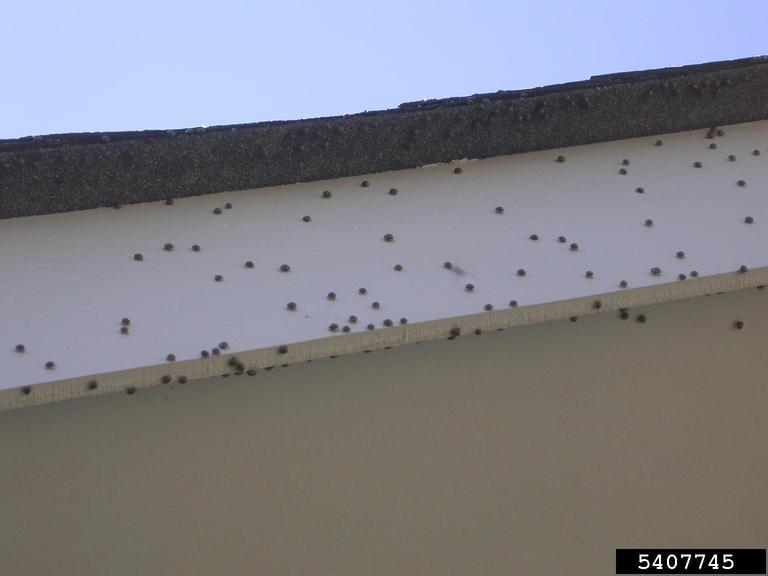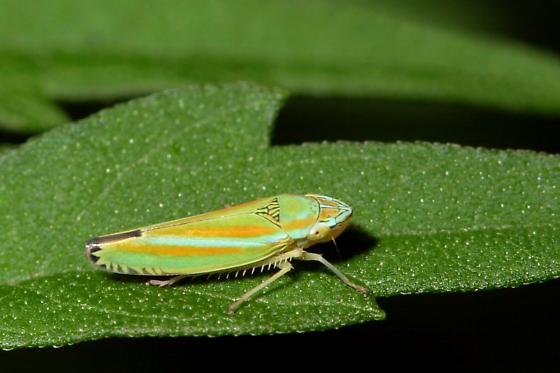 |
| Developing hops cones at the Lake Wheeler Road Field Lab, Raleigh, NC. Photo; HJB |
In preparation for the upcoming
NC State Hops Field Tour next week, I have been crunching some data from our hops observations from last year at the
Lake Wheeler Road Field Lab hop yard. The results so far have been very interesting.
Background
Our goal, as part of the larger
NC State Hops Project, was to learn what arthropods (insects and mites) were present in North Carolina grown hops and which of these insects may become pests in commerical production.We knew from work in the
Pacific Northwest that twospotted spider mite and hop aphid were potentially significant pests of hops that occur in North Carolina, but we didn't know what other insects pests may be present. We utilized the
research hop yard at the
Lake Wheeler Road Field Lab, which included 10 different hops varieties planted in four, five plant plots, to conduct our observations. We sampled insects and mites in two ways: 1. We collected 10 leaf samples from each plot weekly and counted the number of spider mites, predatory mites (good guys), aphids, and leafhopper nymphs, and 2. We placed a yellow sticky trap in each plot, which was changed weekly. We then counted the number adult leafhoppers, thrips, aphids, and beneficial insects (in this case, ladybugs) on each trap.
In addition to leaf samples and trapping, we rated defoliation on plants
due to caterpillar or beetle (most commonly Japanese beetle) feeding.
We visually divided the three middle plants in each plot into thirds and rated percent defoliation on the upper, middle, and lower third of each plant. While both caterpillars and Japanese beetles were present throughout the growing season, overall defoliation was minor (less than 1% each week) and localized on the top third of plants.
 |
| One plot at the Lake Wheeler Road Field Lab, early 2011. Photo: HJB |
Results
While we observed spider mites and aphids in our samples, as expected, we also observed two other groups of insects that we did not anticipate, thrips and leafhoppers, because they are not considered pests in the Pacific Northwest.
Looking first at our leaf observations, we found differences in spider mite densities throughout the season between varieties. We express the number of mites multiplied by the days between observations and totaled over the season as "mite days" to compare infestation over time. Click on the images below to enlarge them.
 |
| Cumulative spider mite days in hops varieties during the 2011 growing season. Centennial had far few mites than other varieties observed, with Zeus also trending lower. |
While Centennial had fewer mites than other varieties, more aphids and leafhopper nymphs were present on leaf samples. This is a very interesting difference, because foliar feeding aphids may not necessarily be problematic in hops (presence in harvested cones is the real concern) and we do not know whether leafhoppers are a pest in eastern hops or just commonly present.
 |
| Aphid and leafhoppers nymphs per leaf in foliage samples during 2011. Note that Centennial has by far the greatest numbers of either aphids or leafhopper nymphs. |
While spider mites were present pretty much continuously throughout the growing season, leafhopper nymphs appeared only for a few sampling dates across all plots. The presence of leafhopper nymphs suggests that they are reproducing on hops, which also does not seem to occur in the Pacific Northwest. Predatory mites were present in on some dates but in very low numbers, and aphid numbers were generally low across the board.
 |
| Spider mites, mite eggs, leafhopper nymphs, and aphids in leaf samples across all varieties. |
The most frequently captured leafhopper species in traps was the versute leafhopper,
Graphocephala versuta, a distinctive species common throughout the eastern US. We do not know if the leafhopper nymphs present on leaves are also this species.
The most common insects captured overall on our yellow sticky traps were thrips. Thrips on sticky traps cannot be identified to species, and yellow is attractive to pest and non pest thrips alike, so we cannot say if the thrips we captured were potential pests. However, thrips were not commonly observed on leaf samples, and typical "silver-leafing" thrips damage was not observed on leaves. Aphids were also captured on traps but were less common on leaf samples.
 |
| Insect captures in yellow sticky traps throughout the growing season, 2011. Thrips numbers should be multiplied by ten to get the actual number observed per trap. |
This first year of observations is intriguing, and I am excited to share them in greater detail
next weekend! I am also excited to compare these results to data from from other components of the NC State Hops Project, including fertility and yield (posted
here). Cascade* and Zeus were the highest yielding plants in 2011 and Zeus had low mite numbers. Mites are attracted to and reproduce more on stressed plants, and I suspect that yield relationship is more due to the fact that these varieties were vigorously growing and generally happier in NC than the others, therefore hosting less mites.
It's very important to note that these insect observations are only from one field season, so while they are interesting, they don't necessarily tell us what to expect in the long term. It's also important to understand that presence does not necessarily mean pest. While we observed large numbers of thrips in yellow sticky traps, we did not necessarily see large numbers on foliage nor did we see any evidence damage, and while leafhoppers are common in and around NC hops, we do not know they are causing significant damage.
Update, 14 July
For those of you unable to attend today's field tour, you can view the slides from my presentation
here.
Update, 31 July
As the commenter below pointed out, Centennial was a poor producer, while Zeus had relatively high yields. Cascade, the other relatively strong yielding variety, had mid-range mite populations and low populations of other leaf feeding pests.
More information
NC State Hops Project
All hops posts - NC Small Fruit & Specialty Crop IPM



































